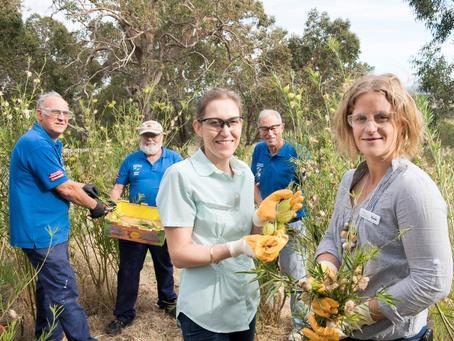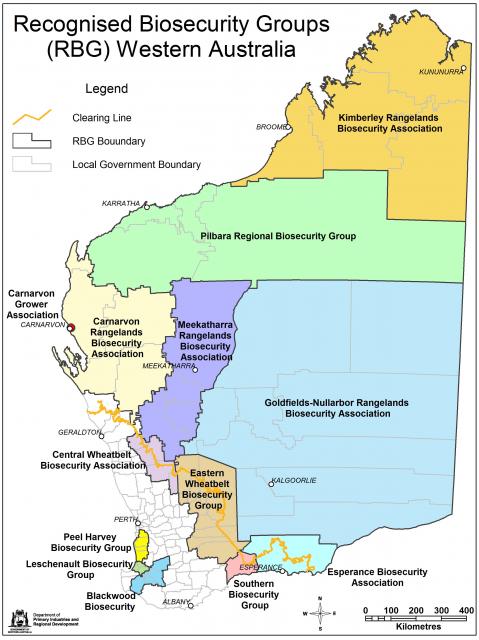New Recognised Biosecurity Groups to add to State’s pest defence
A new era of biosecurity management has been heralded with the formation of six new Recognised Biosecurity Groups (RBGs) in the agricultural region.
The Department of Primary Industries and Regional Development (DPIRD) has been instrumental in establishing the groups, as part of the $2.3 million Transforming Regional Biosecurity project.
The four year project, which comes to a close at the end of June, was designed to support regional communities to come together and establish an RBG to coordinate control measures for local plant and animal pests.
The new RBGs include the Central Wheatbelt Biosecurity Association, Esperance Biosecurity Association, Southern Biosecurity Group, Peel Harvey Biosecurity Group, Leschenault Biosecurity Group and the Blackwood Biosecurity Incorporated.
Meanwhile, the department is continuing to work with three other groups in the agricultural area to assist them to explore recognition.
The new additions will join the Eastern Wheatbelt RBG, formed in 2015, five groups established in the pastoral area and the Carnarvon Growers Association formed to address the eradication of Mediterranean Fruit Fly.
The department has worked to build the capacity of the groups to identify declared pest priorities, in consultation with the local community.
For the new groups these range from wild dogs and foxes in eastern areas to rabbits, feral pigs and weeds of significance in the South West.
Under the provisions of the Biosecurity and Agriculture Management Act 2007 (BAM Act), landholders are responsible for controlling declared pests on their property.
However, the government recognises that declared pests are not confined to property or shire boundaries – highlighting the need for a community-led control effort to successfully control widespread, established pests.
The BAM Act provides a framework for community to secure financial support from the State Government to undertake collective control by establishing an RBG.
RBGs are able to develop a plan and budget for the Minister to raise a Declared Pest Rate, which, if successful, is matched by the State Government to manage a single or multiple pests.
The rate can be applied as either a flat rate or ad valorem, based on the unimproved value of the land.
To secure funding from a Declared Pest Rate, RBGs are required to engage with the community to determine what declared pest issues are a priority affecting landholders in their area and then develop an operational plan.
DPIRD supports RBGs to make these decisions with input and advice, which is explained in a guidance manual for groups.
The new RBGs in the agricultural region have been working with the community to build a proposal and support for a Declared Pest Rate, including written communication about any intended rate.
This includes hosting workshops to enhance landholders’ knowledge and skills to control declared pests on their land, such as herbicide spraying and feral pig and rabbit control methods.
The Eastern Wheatbelt RBG, recognised in 2015, had a rate determined across 11 shires to assist efforts to control wild dogs in 2016/2017.
Typically, the rate averages less than $50 per year per landholder, which translates to about $200,000, which is matched dollar-for-dollar by the State Government.
This sum provides resources to support the groups’ governance operations, including administration and a part-time executive officer and funds two contractors to support landholders’ endeavours to control wild dogs in marginal areas.
The Declared Pest Rate is reviewed annually and groups are required to provide an operational plan, which includes the funds they require from the rate.
A strength of the process is that the groups are led by local people and decisions are made locally.
While each group determines its own priorities and structure, the common threads to successful RGBs are a comprehensive action plan that adds value to landholders’ efforts and good community engagement.
Experience in the pastoral region, where pest management is spread over vast areas, and in the eastern Wheatbelt has shown this approach has given local communities greater autonomy to more effectively address local biosecurity issues.
This approach underpins the shared responsibility of pest management, helping to protect agricultural production, as well as Western Australia’s enviable biosecurity reputation that opens doors to market access.
For more information about RBGs and the Declared Pest Rate click here or contact Simon Merewether, A/Director Invasive Species, Bunbury, +61 (0)8 97806291.


